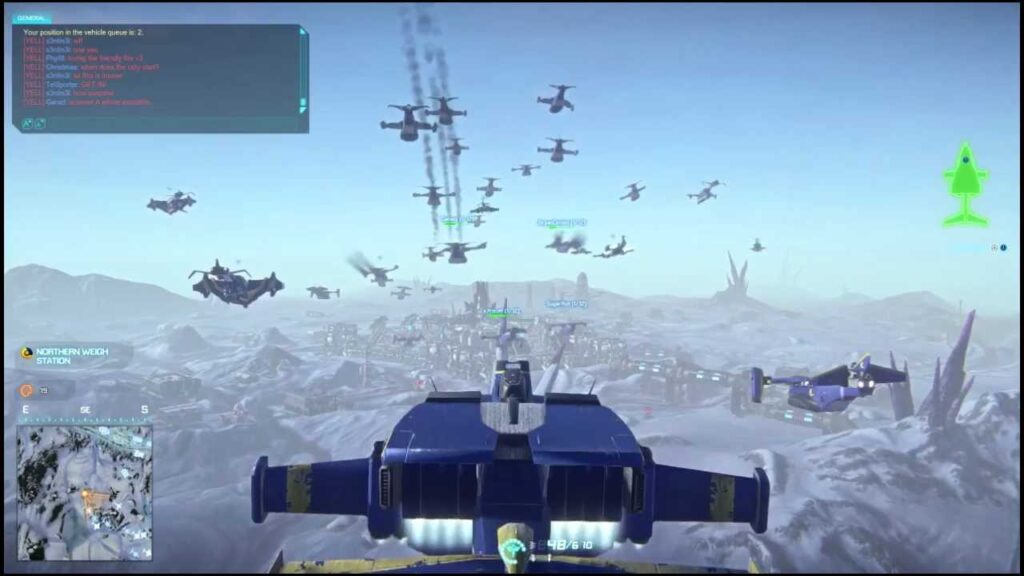
Solving Physics at Scale in Planetside 2
When building Planetside 2, the sequel to the groundbreaking large-scale multiplayer shooter Planetside, the team faced a massive technical challenge: how to level up both the quality and the scale of the game. They wanted physics-driven vehicles that felt responsive and nimble, but they also needed these mechanics to scale seamlessly to support hundreds of players in epic battles. At the time, no game had accomplished this at the scale they envisioned.
The core issue? Physics simulation doesn’t play nicely with high-latency environments or the kind of object snapping and interpolation that happens in server-driven solutions. Physics engines tend to get unpredictable when objects teleport or interact erratically, often causing spikes in performance or wild, explosive velocities. Add to this the sheer volume of objects and players the game needed to handle, and neither client nor server could feasibly handle the computational load alone.
We needed a hybrid solution.
A Hybrid Physics System
To tackle this, I designed a system where vehicle physics ownership dynamically shifted between clients. The basic idea was simple: the client best suited to control a vehicle—usually the driver or the nearest player if the vehicle was abandoned—would take ownership of its physics simulation. This “master” client would handle the vehicle’s movement and physics locally, then broadcast the results (position, linear velocity, angular velocity) to other clients. Those clients would adjust the vehicle’s position on their end, smoothing the motion to avoid jarring corrections.
This approach meant that only one machine was doing the heavy lifting for any given vehicle at a time, drastically reducing the load on both clients and servers. Vehicles felt responsive to the driver while maintaining consistent behavior for all players, even in massive battles.
Risks and Rewards
Admittedly, this was a bold move. Our PhysX consultant from NVIDIA expressed doubts about whether the solution could work at the scale we were aiming for. And honestly, there weren’t many alternatives. Fully simulating physics on servers or clients for maps of this size with so many objects would’ve been a non-starter—computers and networks of that era just weren’t up to the task.
In the end, this system delivered exactly what we needed:
- Responsive vehicle controls that felt tight and smooth for the driver.
- Support for high player and vehicle counts without sacrificing performance.
- Consistent framerates, even in the most chaotic battles.
This wasn’t just about solving a technical problem; it was about pushing the boundaries of what large-scale multiplayer games could achieve. And while the solution was unconventional, it worked—and it ensured Planetside 2 stood out as a groundbreaking entry in the genre.
Sometimes, taking risks with innovative approaches is the only way to move the needle forward. Planetside 2 still holds the Guinness World Record for the most players in an online FPS battle, with a recorded 1,158 players in a single battle. I’m pretty proud of this solution, and the exemplary work of the Planetside 2 team.